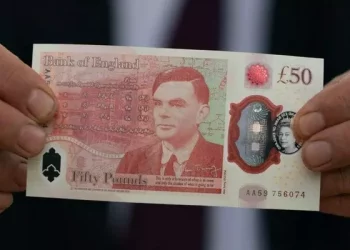The Indian Rupee (INR) gained ground on Tuesday, continuing its positive momentum after hitting a four-month high in the previous session. The strength of Indian equities provides support to the local currency, while growing concerns over U.S. tariffs and U.S. President Donald Trump’s criticism of Federal Reserve Chair Jerome Powell are exerting downward pressure on the U.S. Dollar (USD), benefiting the INR.
RBI Intervention and Interest Rate Cut Expectations Weigh on INR
Despite the INR’s strength, market participants are closely monitoring the Reserve Bank of India (RBI), which may be stepping in to purchase USD in order to curb the Rupee’s rise. Furthermore, growing speculation that the RBI could implement an interest rate cut in its upcoming policy meeting adds downward pressure on the INR. Recent data revealed that India’s inflation rate fell to its lowest level in over five years in March, well below the RBI’s midpoint target of 4%, which has fueled expectations of a rate cut.
The U.S. Federal Reserve’s Patrick Harker and Neel Kashkari are scheduled to speak later on Tuesday, with traders likely to scrutinize their comments for insights into the Fed‘s future policy stance. Additionally, India’s HSBC Purchasing Managers’ Index (PMI) for April and the U.S. S&P Global PMI reports will be key market drivers later this week.
India-U.S. Trade Developments Boost INR Sentiment
On the positive side, ongoing U.S.-India trade talks have garnered attention, with Prime Minister Narendra Modi and U.S. Vice President JD Vance reporting significant progress in negotiations for a Bilateral Trade Agreement (BTA). The two sides have reportedly finalized the Terms of Reference for the negotiations, which lays out a roadmap for future discussions on shared economic priorities. This trade optimism has contributed to the INR’s positive sentiment.
Bearish Bias Below 100-Day EMA
From a technical perspective, while the INR is trading on a firmer note, the USD/INR pair remains capped below the 100-day Exponential Moving Average (EMA) on the daily chart, signaling that the longer-term downtrend is intact. The 14-day Relative Strength Index (RSI), currently near 38.10, further supports the bearish outlook.
Key support for the pair lies in the 85.00-84.95 range, which coincides with a psychological level and the lower boundary of the descending trend channel. A breach below this level could see the pair targeting 84.53, the low from December 6, 2024, with additional support at 84.22, the low from November 25, 2024.
On the upside, resistance is seen at the 100-day EMA near 85.85. A sustained move above this level could see the pair pushing toward 86.55, the upper boundary of the trend channel.
Limited INR Upside Amid RBI Rate Cut Expectations
While the Indian Rupee has gained strength amid a weaker U.S. Dollar and positive trade developments, the RBI’s potential policy easing and market expectations of further rate cuts could limit the INR’s upside. The direction of the USD/INR pair will likely depend on developments in the U.S. Federal Reserve’s monetary policy and India’s upcoming economic data.
Related Topics:

























